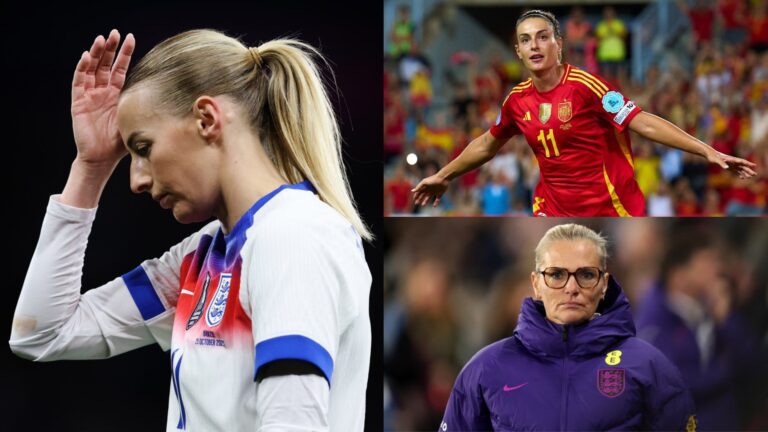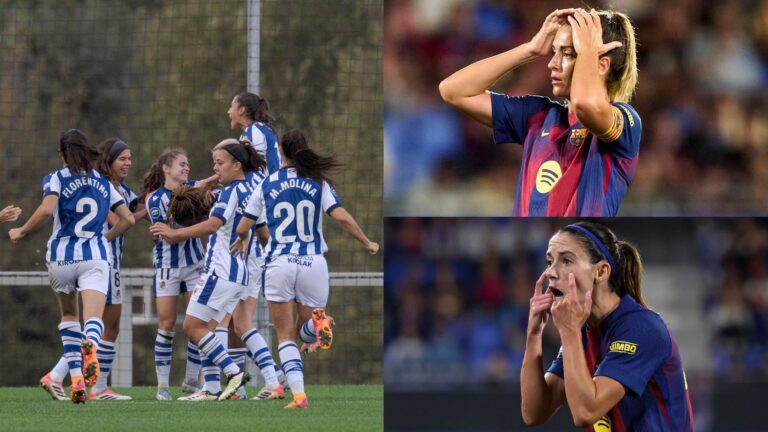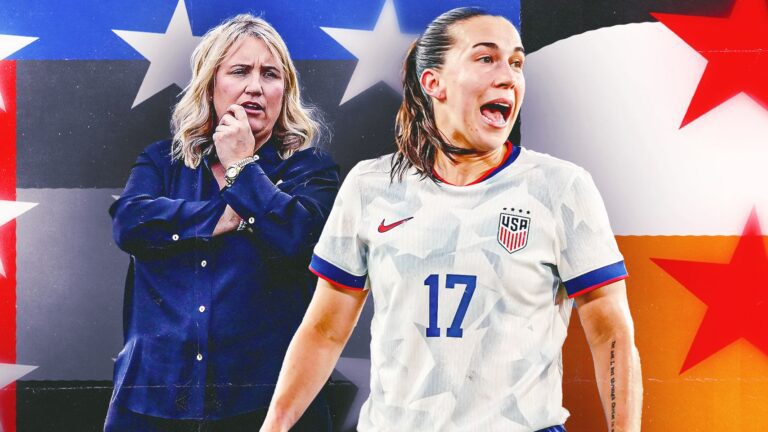USWNT’s Unexpected Setback: Lessons from the Portugal Clash
In the wake of a stunning 2-1 defeat to Portugal, USWNT frustration was palpable, marking a rare stumble for the team under Emma Hayes’ leadership. This loss, against a side with no prior victories or goals against the Americans, highlighted vulnerabilities that had not surfaced in previous defeats to formidable opponents like Brazil and Japan.
Emma Hayes’ irritation was unmistakable following the match, as she reflected on the team’s uncharacteristic performance that evening. She likened her role to constantly addressing emerging issues, stating in her TNT interview that the game aged her immensely and left her questioning the squad’s focus moving forward. Emphasizing basic tactics, Hayes noted the team’s early lapse after scoring, which put them on the defensive for the remainder. She expressed concern that younger players, such as those from the Under-23 group, might struggle to identify the team’s core strategies based on this display, as the unit failed to synchronize in defense or attack, appearing mentally disconnected throughout.
Once Rose Lavelle scored just 33 seconds in, the team seemed to lose its edge, a common pitfall in sports, but the real issue was their inability to recover, allowing Portugal two avoidable goals from dead-ball scenarios. Despite Portugal’s poor run of form, entering the match without a win in eight outings, they capitalized effectively, forcing the Olympic champions to confront their own shortcomings after a lengthy break since July.
Sam Coffey, the midfielder, dismissed any excuses related to the hiatus, calling it an evasion of responsibility. She insisted the performance fell short of expectations, with players acting independently rather than as a unit, underscoring the immense pride and obligation tied to representing the USWNT. Still, she viewed it as a minor obstacle, confident in the team’s ability to rebound strongly.
The upcoming fixture on Sunday in East Hartford, Connecticut, against the same opponent will demand a sharper response, with Hayes making it clear she expects a turnaround and takes full accountability for motivating the group.
Analyzing the Game’s Turning Points
In soccer, dead-ball situations often prove decisive, turning the tide in tight contests. For the USWNT, Thursday’s encounter was defined by these moments, as both conceded goals stemmed from set plays, exposing a critical weakness.
Set Pieces as a Critical Weakness
The USWNT’s talented lineup typically dominates, yet opponents frequently exploit set-piece opportunities to gain an edge. This match was no different, with the team failing to effectively clear threats twice. While the absence of key organizer Naomi Girma due to injury might have played a role, the squad’s experience should have sufficed. Portugal’s success here wasn’t mere luck; it was earned through persistence, though the USWNT must address these lapses to avoid future setbacks. Coffey echoed this sentiment post-game, labeling the concessions as disappointing and below the team’s defensive standards.
Portugal’s Resilient Performance
Heading into Subaru Park, Portugal lacked momentum, having secured just one win in their last 10 games and suffering heavy losses to powerhouses like Spain and England. The friendly was anticipated as a straightforward boost for the developing USWNT.
An Underdog’s Determined Effort
Contrary to expectations, Portugal delivered a spirited challenge, sharing possession and converting key chances. Coach Francisco Neto’s preparation was evident, as his side matched the Americans’ intensity, employing physical tactics that disrupted the flow. Though some plays bordered on overly aggressive, Portugal maintained control, contributing to the USWNT’s inconsistencies. Looking ahead to the rematch, Portugal’s victory provides a foundation for confidence, even if repeating it seems unlikely.
The Role of Injured Stars
Trinity Rodman, a dynamic presence on the field, was present at the game but sidelined by injury, adding to the team’s challenges.
Rodman’s Bittersweet Return
Despite her knee issue, Rodman attended to support her teammates and celebrate Alex Morgan, marking a positive step after her extended absence due to a back problem. In pregame comments, she expressed disappointment at not playing, yet remained appreciative of the opportunity to contribute from the sidelines. Her energy is vital for the USWNT, both in matches and team dynamics, and her absence likely impacted the outcome.
Celebrating Legends: Alex Morgan’s Influence
The event also served as a tribute to Alex Morgan, reminding everyone of her lasting contributions to women’s soccer.
Morgan’s Enduring Legacy
Scenes before kickoff captured Morgan’s significance, with fans in her jerseys, teammates sharing laughs, and her family present, alongside a custom bobblehead. Morgan shared fond recollections of her journey with the team, emphasizing the honor of one final appearance. US Soccer’s recognition highlighted her extensive achievements, from championships to iconic goals and cherished memories, which far exceed a simple ceremony. Coffey praised Morgan as a role model who transformed the sport, embodying the ideal of improving opportunities for future generations. Even amid the loss, Hayes lauded Morgan’s consistent excellence and the respect she commands, underscoring the demands of national team play.
Early Game Controversies and Their Implications
The USWNT’s quick strike raised eyebrows, as it might not have stood under closer review, reflecting broader officiating concerns.
Offside Debates and Game Outcomes
Lavelle’s early goal, while celebrated, appeared offside and could have been overturned with VAR intervention. Similar close calls, including one involving Catarina Macario later, added to the game’s tension. In the end, these decisions didn’t define the loss, which stemmed from overall play, but in such finely balanced matches, they can influence results profoundly.
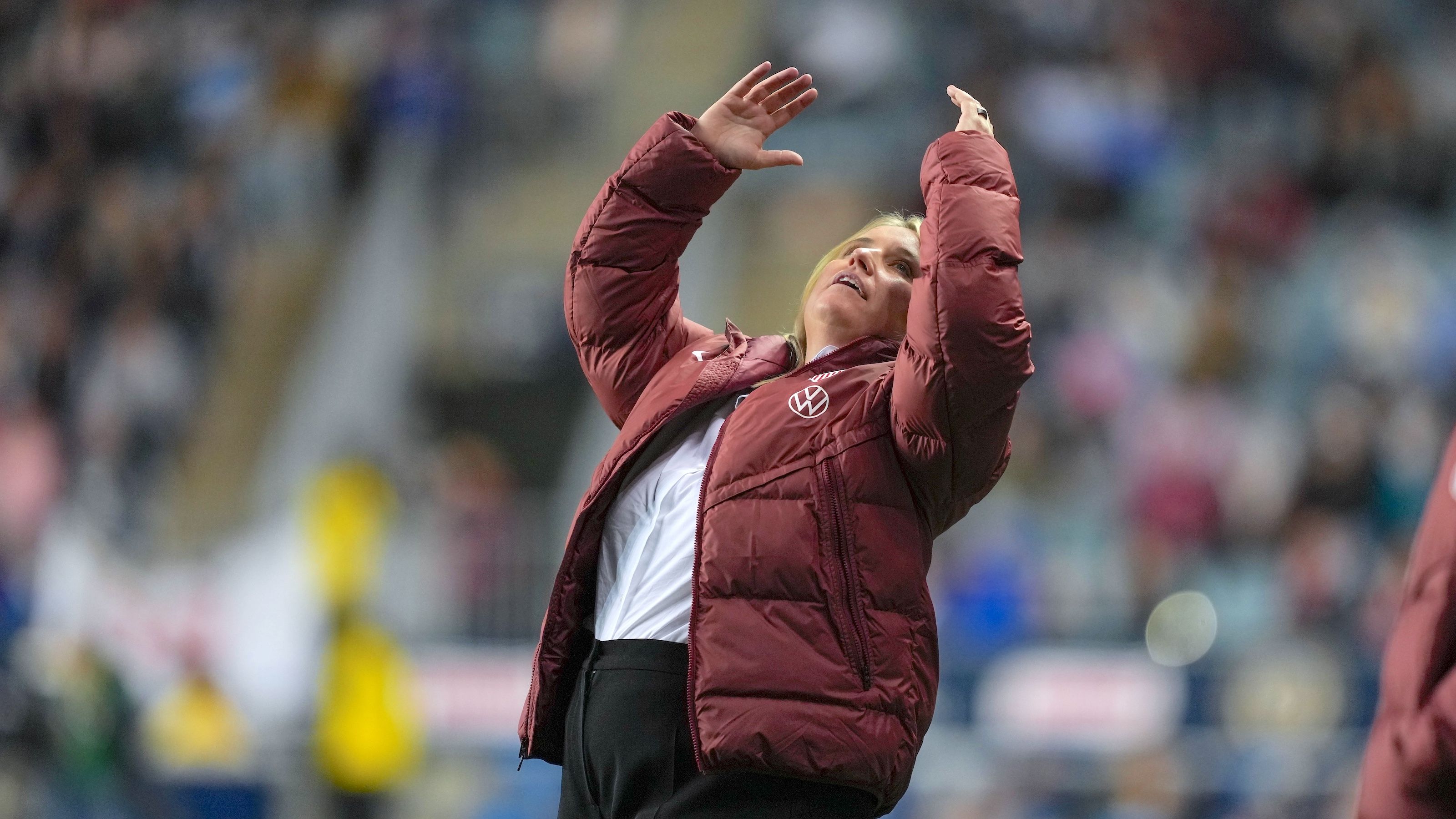
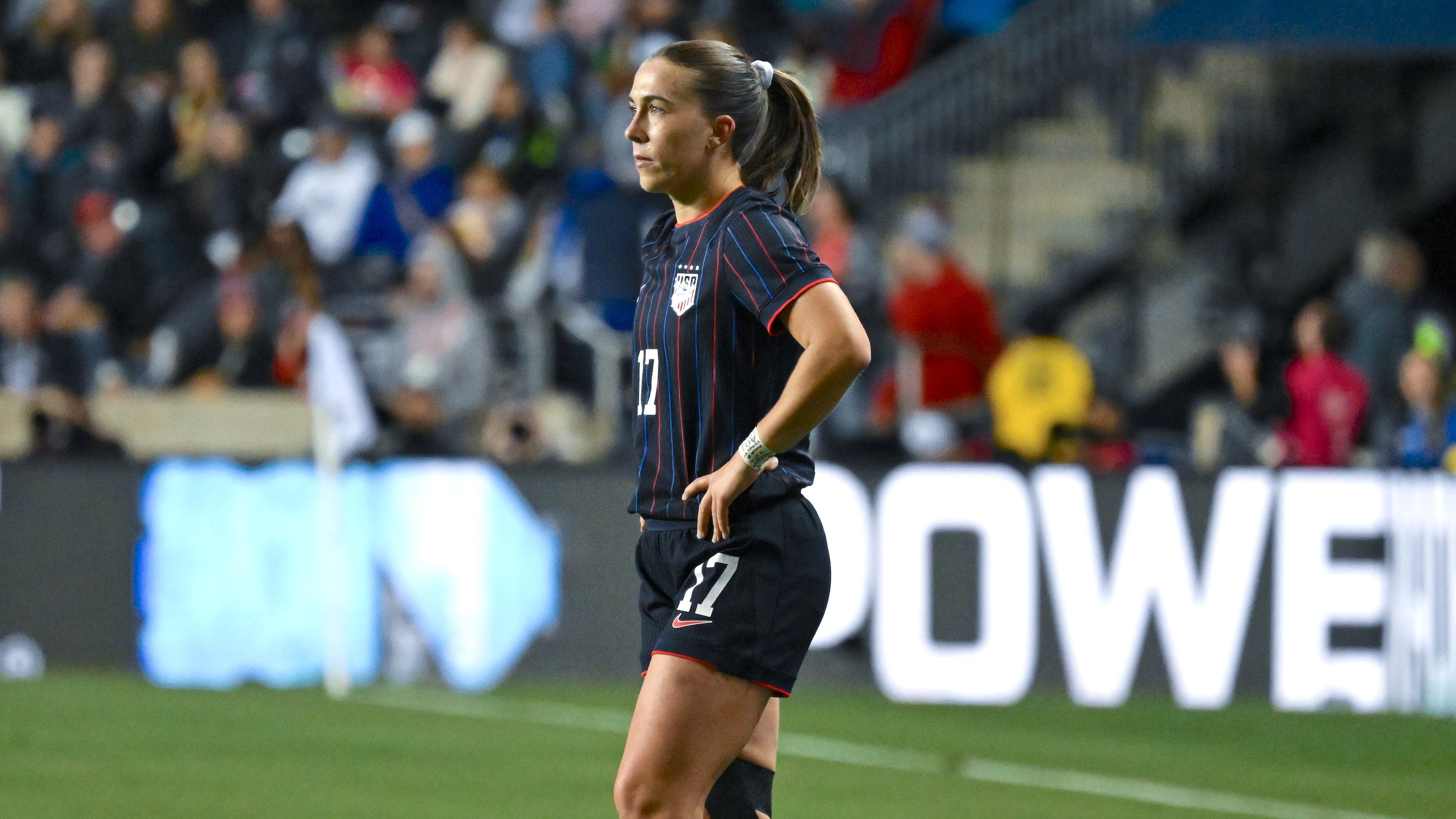
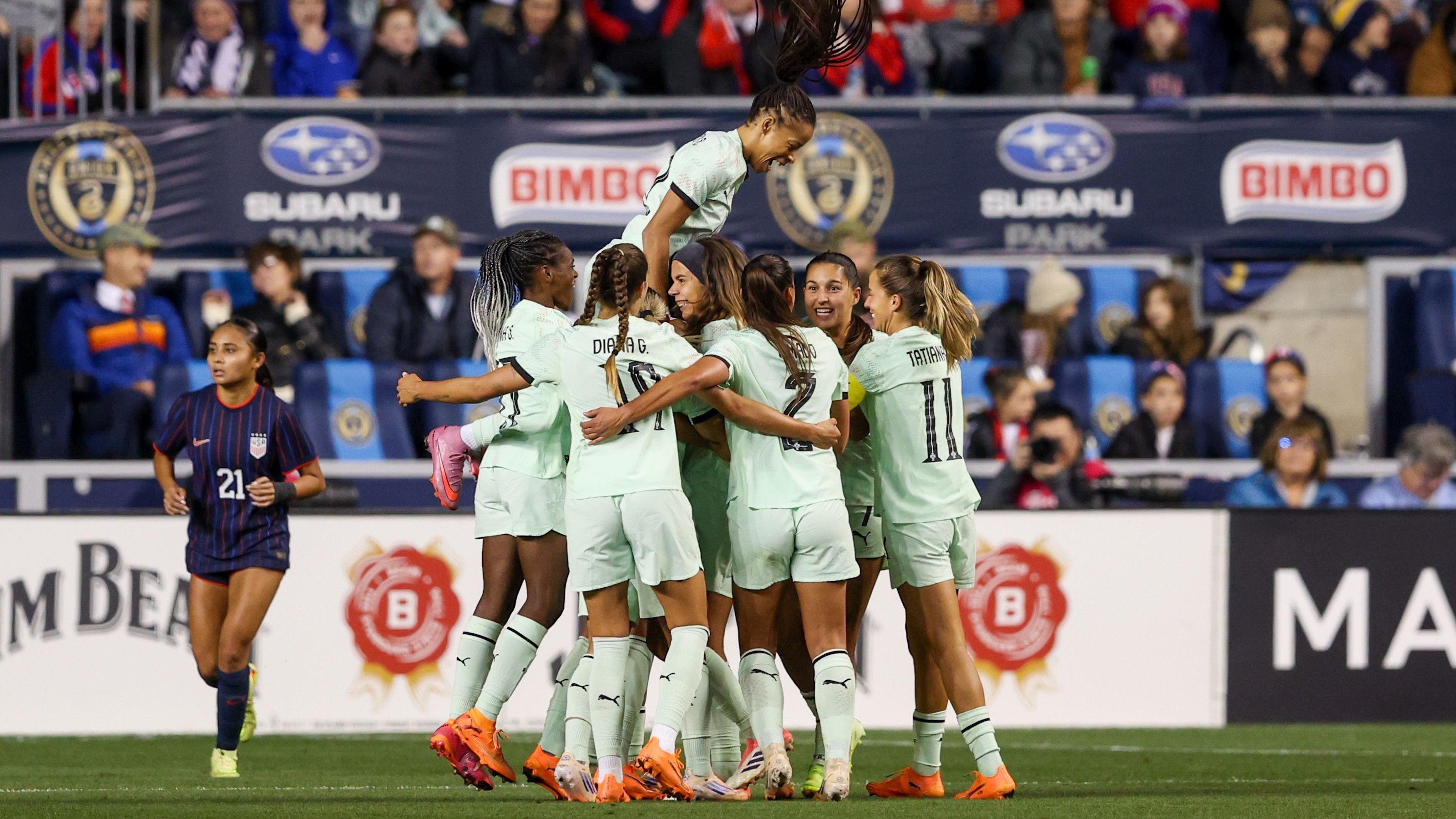



Emma Hayes’ Frustrations Following the Defeat
In the world of women’s soccer, few coaches have faced as much scrutiny as Emma Hayes after the US Women’s National Team’s (USWNT) unexpected defeat. This loss highlighted the pressures on Hayes as she navigates tactical adjustments for the team, drawing attention from fans and analysts alike. Let’s dive into the key frustrations she expressed and how they tied into her strategic shifts.
Key Sources of Frustration for Emma Hayes
Emma Hayes’ frustrations often stem from performance gaps in high-stakes matches, such as defensive lapses and inconsistent attacking play. During post-match discussions, she voiced concerns about the team’s inability to adapt quickly to opponents’ tactics, which can disrupt the USWNT’s usual dominance in international women’s soccer.
- Defensive Vulnerabilities: Hayes pointed out issues like poor positioning and communication errors, which allowed opponents to exploit gaps. For instance, she highlighted how the team’s high defensive line, a staple of her strategy, backfired in this game.
- Player Form and Fitness: Several players struggled with form, leading Hayes to express frustration over injuries and fatigue affecting key positions. This is a common challenge in women’s national team soccer, where players juggle club and international commitments.
- Opponent Preparation: Hayes noted that the opposing team’s tactical surprise caught the USWNT off guard, emphasizing the need for better scouting and adaptability in future women’s soccer fixtures.
These frustrations underscore the broader theme of maintaining excellence in USWNT tactical adjustments, especially as Hayes works to rebuild team morale.
Tactical Adjustments Implemented by Emma Hayes
Following the defeat, Emma Hayes wasted no time in making tactical adjustments to address the shortcomings. Her approach focused on balancing defensive solidity with the team’s renowned attacking prowess, a hallmark of successful women’s soccer strategies.
Major Strategic Shifts
Hayes shifted from a high-pressing style to a more controlled, possession-based game to minimize risks. This adjustment aimed to reduce turnovers in midfield, a critical area for USWNT success.
- Formation Changes: She experimented with a 4-3-3 formation, transitioning to a 4-4-2 when defending. This allowed for greater flexibility, enabling wingers to drop back and support the defense.
- Midfield Overhaul: Emphasizing quick transitions, Hayes prioritized players with strong passing accuracy. For example, introducing substitutions mid-game to inject fresh energy and tactical variety.
- Training Focus: In subsequent sessions, Hayes incorporated drills targeting set-piece defense and counter-attacks, drawing from her successful tenure at Chelsea to enhance USWNT preparation.
These changes reflect Hayes’ expertise in women’s soccer coaching, focusing on long-term tactical adjustments that could prevent future unexpected defeats.
In-Depth Analysis of Adjustments
H4: Impact on Player Roles
One notable aspect was how Hayes redefined player roles to foster versatility. For instance, fullbacks were instructed to overlap less, prioritizing width only in controlled phases. This adjustment helped mitigate the frustrations from exposed flanks during the loss.
H4: Data-Driven Decisions
Leveraging performance analytics, Hayes analyzed match data to fine-tune her tactics. Metrics like pass completion rates and defensive recoveries guided her decisions, ensuring that USWNT tactical adjustments were evidence-based and aligned with modern women’s soccer trends.
Winners from the USWNT’s Performance
Despite the defeat, certain elements of the team’s play stood out, identifying clear winners in terms of individual and collective efforts. These highlights offer a silver lining for Emma Hayes and her tactical adjustments.
Standout Players and Positives
- Midfield Maestros: Players like Lindsey Horan emerged as winners, showcasing excellent vision and control that aligned with Hayes’ adjustments. Her precise passing disrupted the opposition’s rhythm, exemplifying effective USWNT tactics.
- Goalkeeper Heroics: If a goalkeeper made crucial saves, they became a key winner, demonstrating resilience amid the team’s frustrations.
- Team Cohesion in Moments: Bullet points of success include improved second-half pressing, which created scoring opportunities and boosted morale for future women’s soccer matches.
These winners highlight how tactical adjustments can turn frustrations into opportunities for growth within the USWNT framework.
Losers from the Defeat
On the flip side, the unexpected defeat exposed several losers, from underperforming players to tactical elements that didn’t click. Emma Hayes’ frustrations were most evident in these areas, prompting immediate scrutiny.
Areas Requiring Improvement
- Forward Line Struggles: Attackers failed to convert chances, making them clear losers in this match. Hayes’ tactical adjustments will need to address finishing drills to sharpen their edge.
- Bench Impact: Substitutes who didn’t make a difference became losers, as their lack of readiness amplified the team’s overall frustrations.
- Set-Piece Execution: The defense’s poor handling of corners and free-kicks was a major downfall, an aspect Hayes has flagged for urgent tactical overhaul.
H4: Long-Term Implications for Losers
For players labeled as losers, this could mean reduced playing time or targeted training. Hayes’ approach involves constructive feedback, ensuring these setbacks fuel positive changes in USWNT dynamics.
H4: Tactical Weaknesses Exposed
The defeat revealed losers in strategy, such as over-reliance on individual stars. Hayes’ adjustments aim to distribute responsibilities more evenly, preventing future unexpected defeats in women’s soccer.
In summary of the key themes, Emma Hayes’ frustrations and tactical adjustments represent a pivotal moment for the USWNT, blending challenges with opportunities for advancement. By focusing on these elements, the team can navigate the competitive landscape of women’s soccer more effectively. (Word count: 728)




